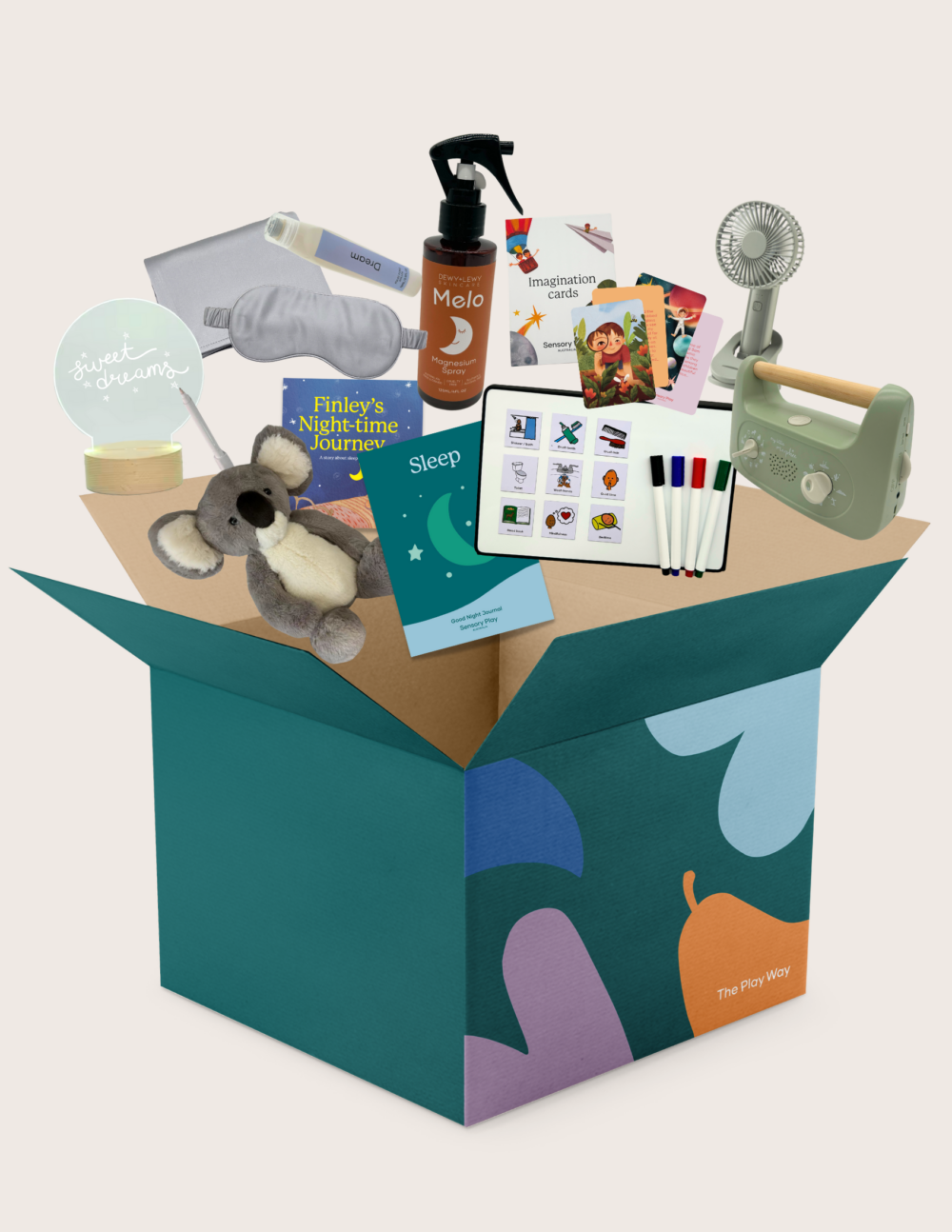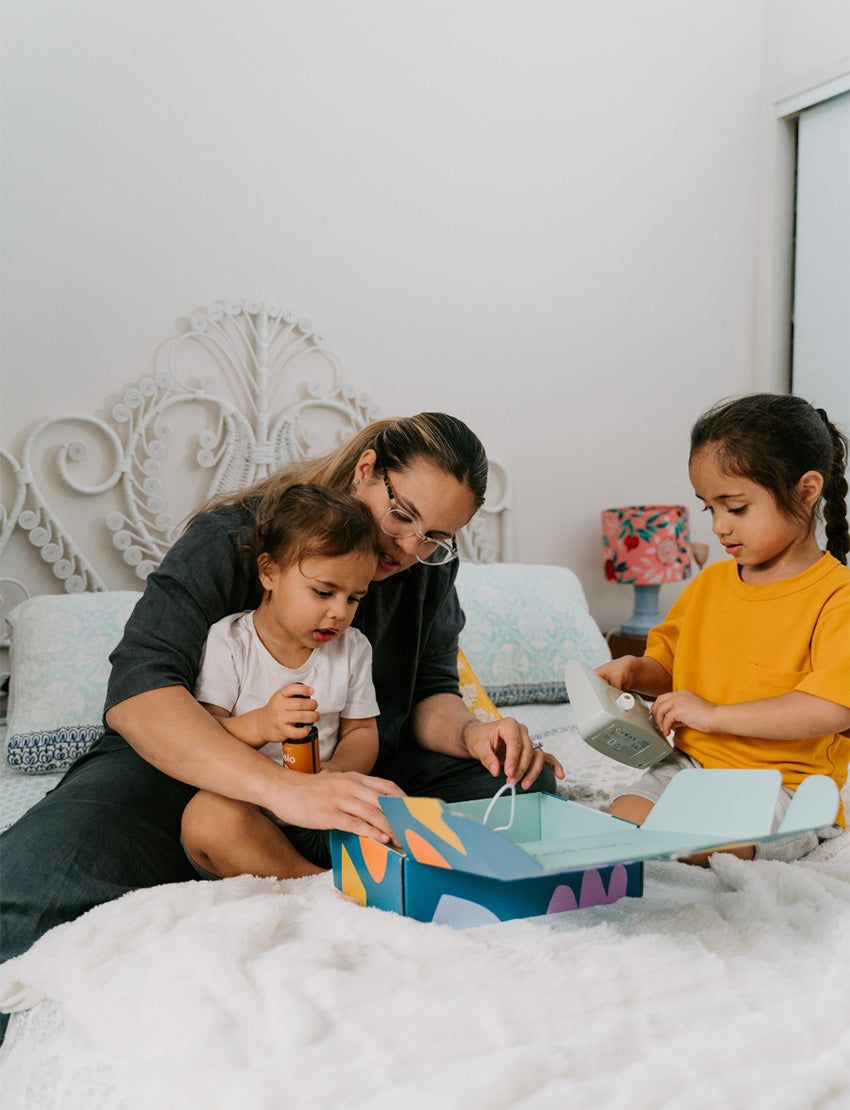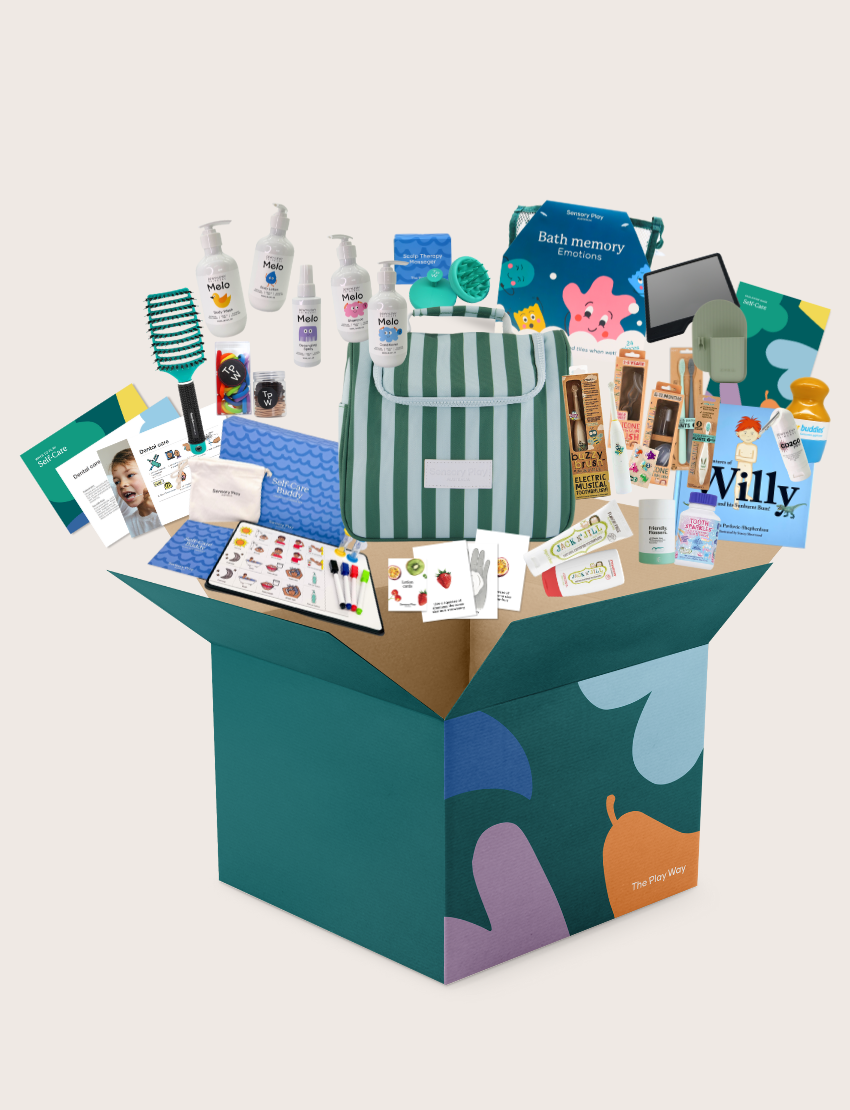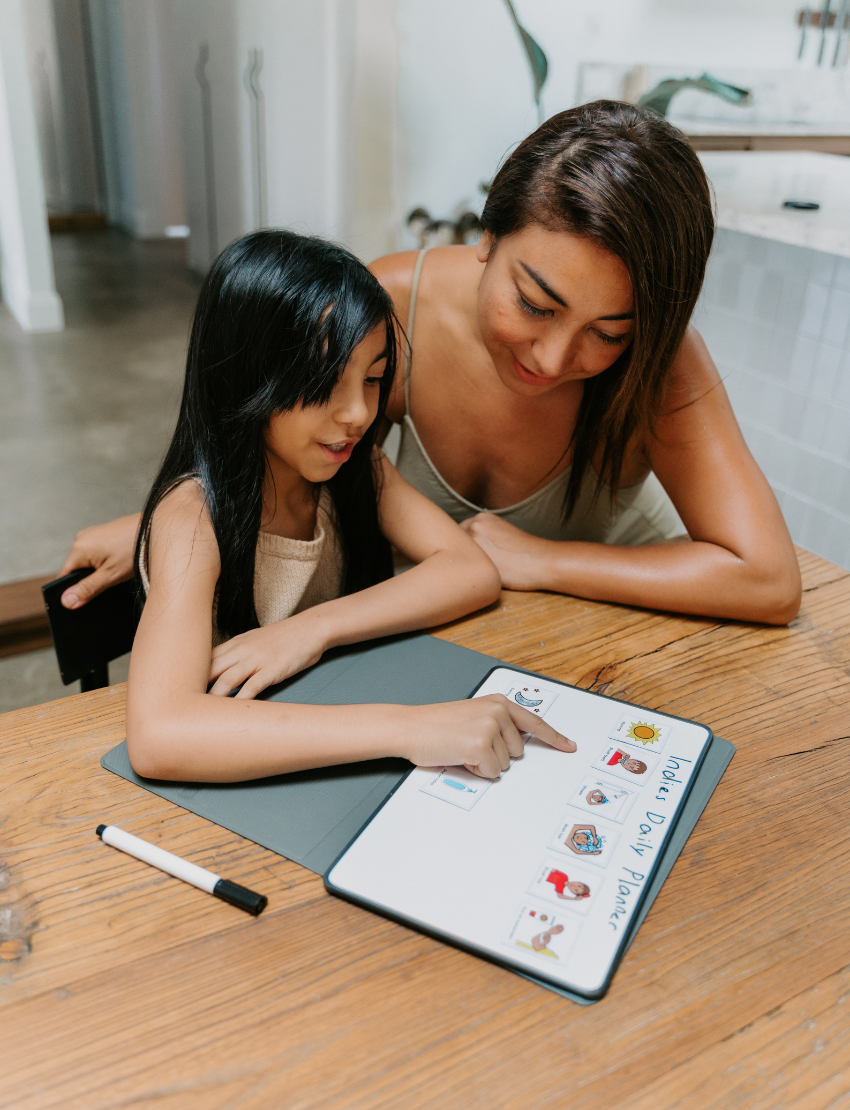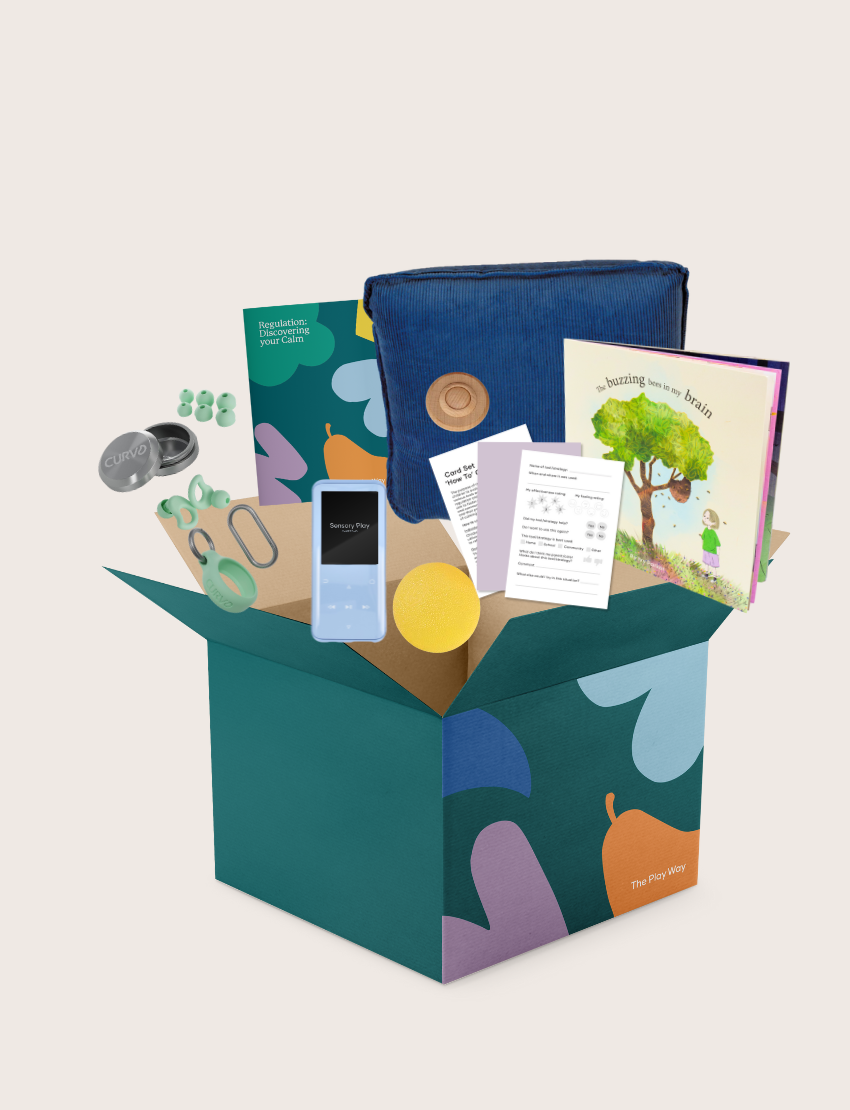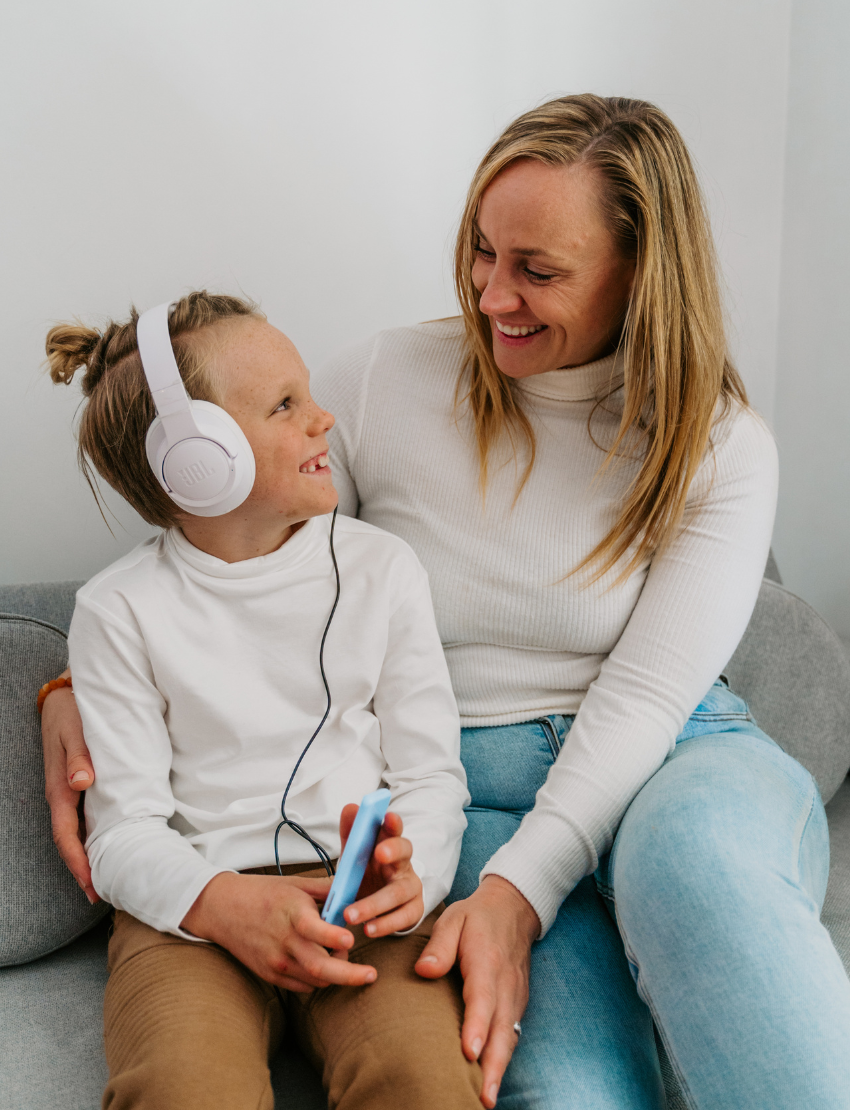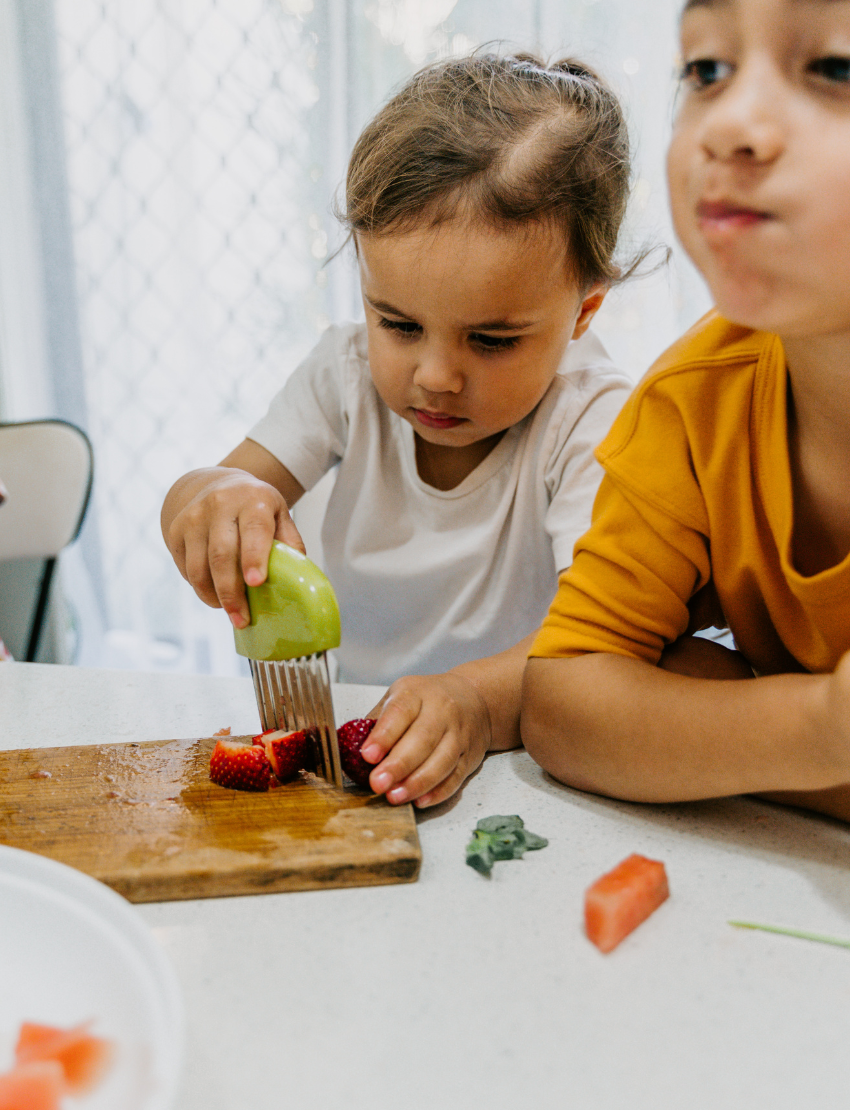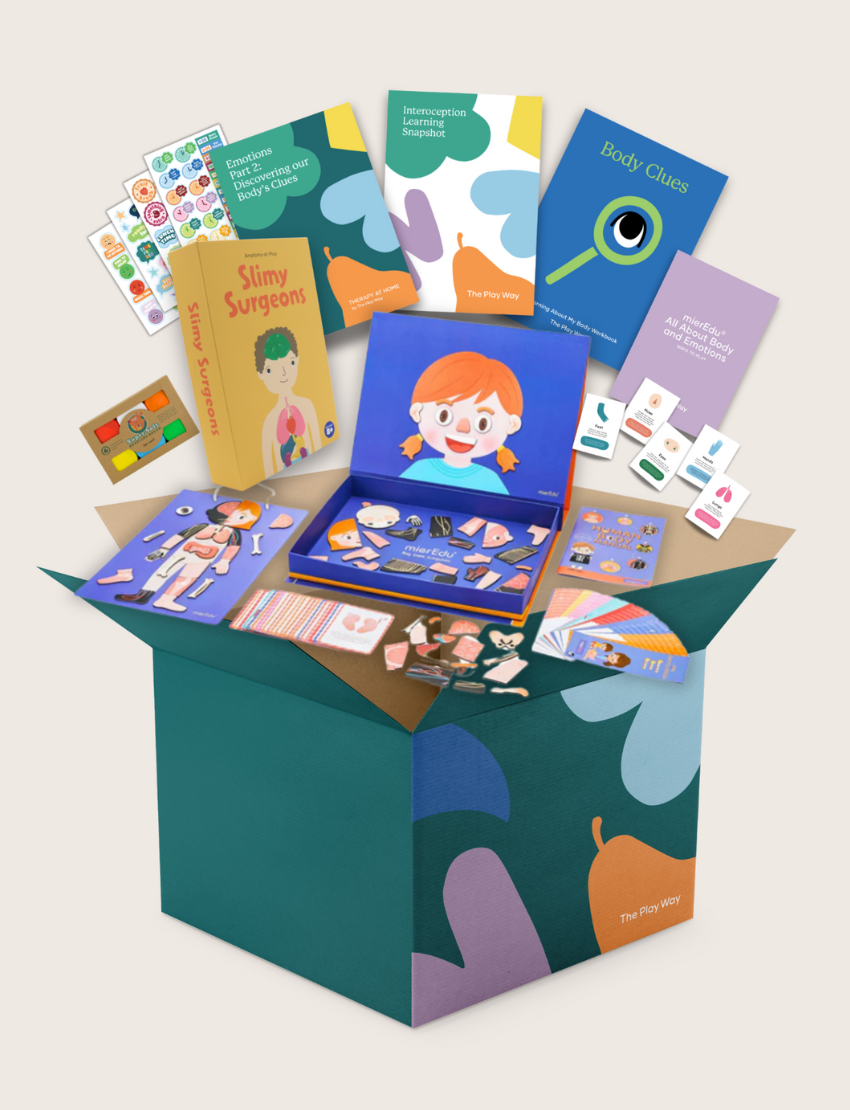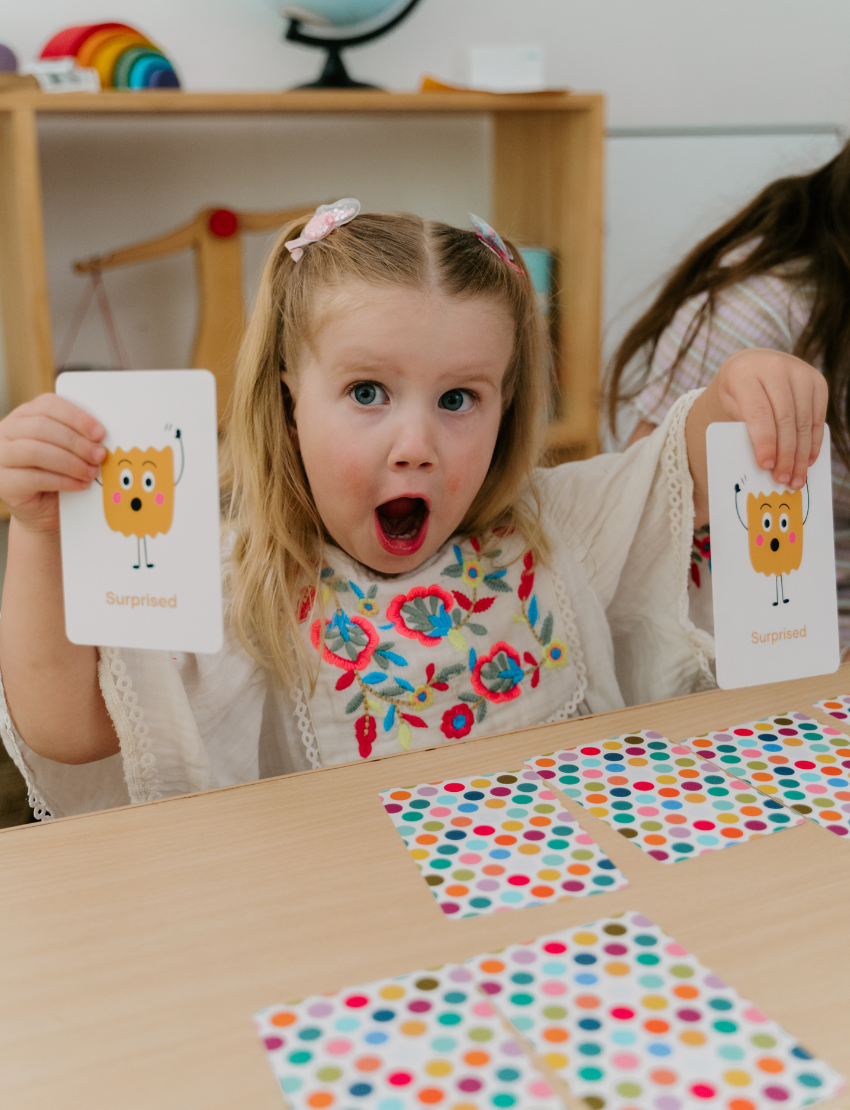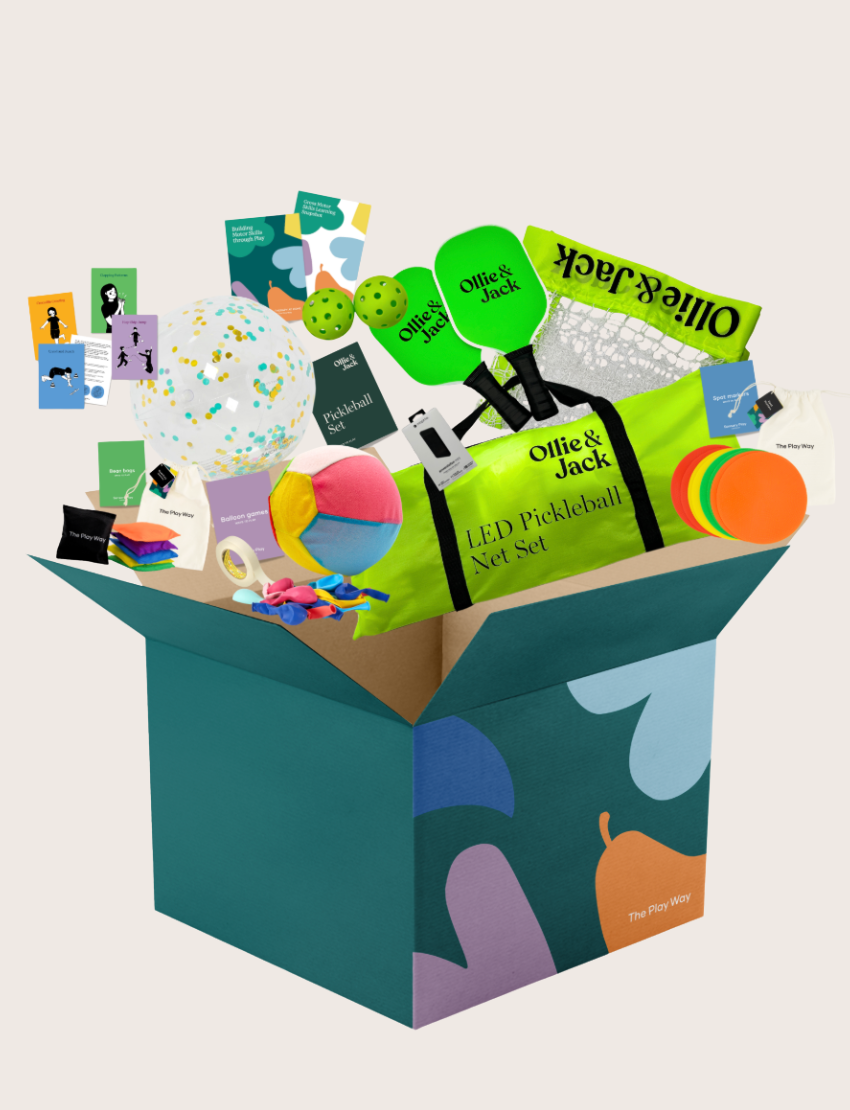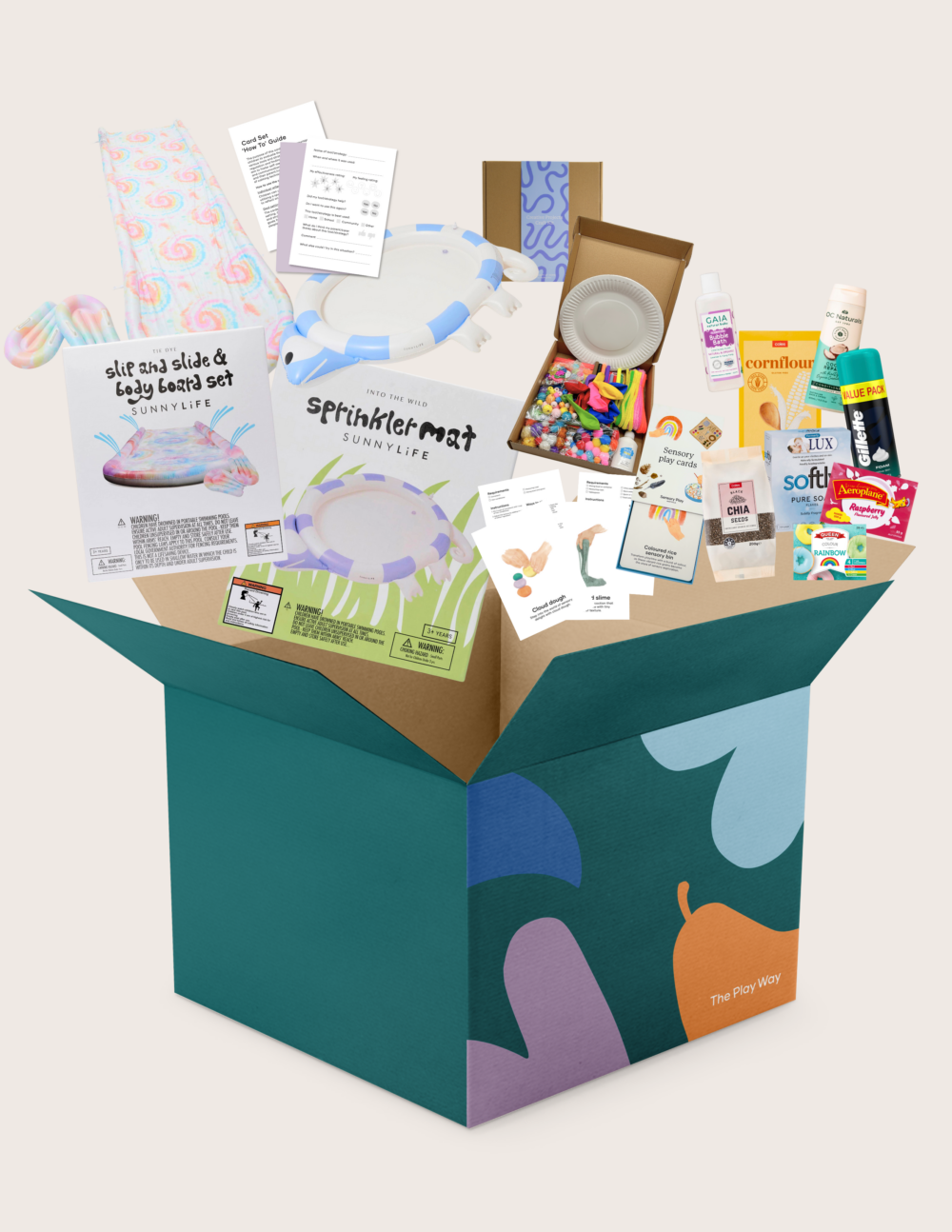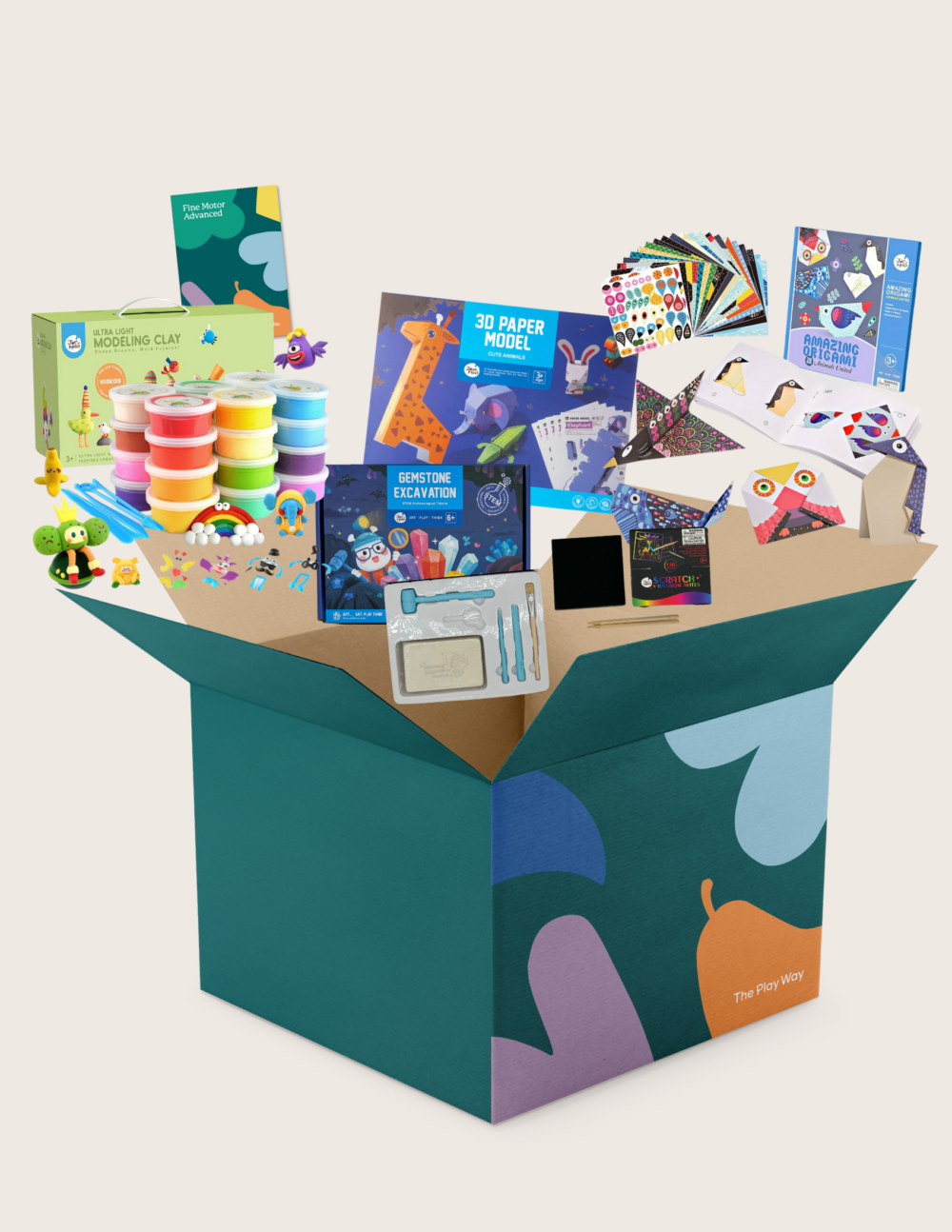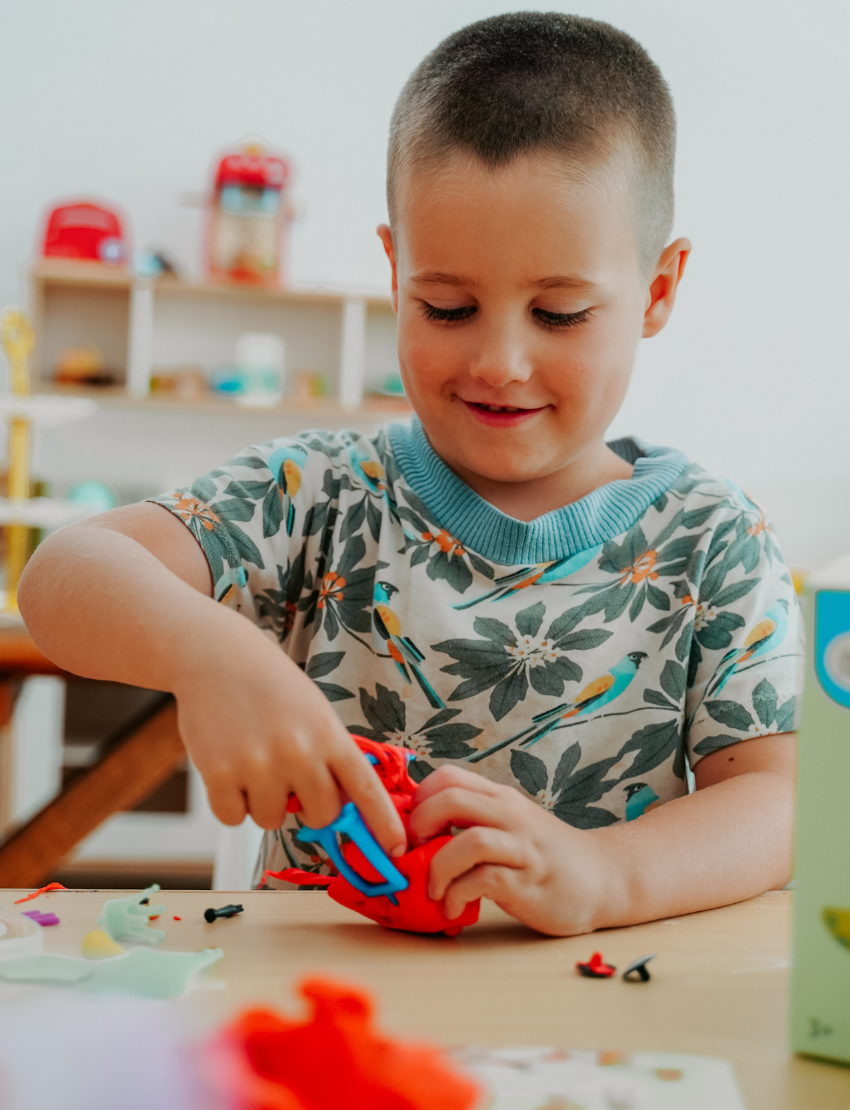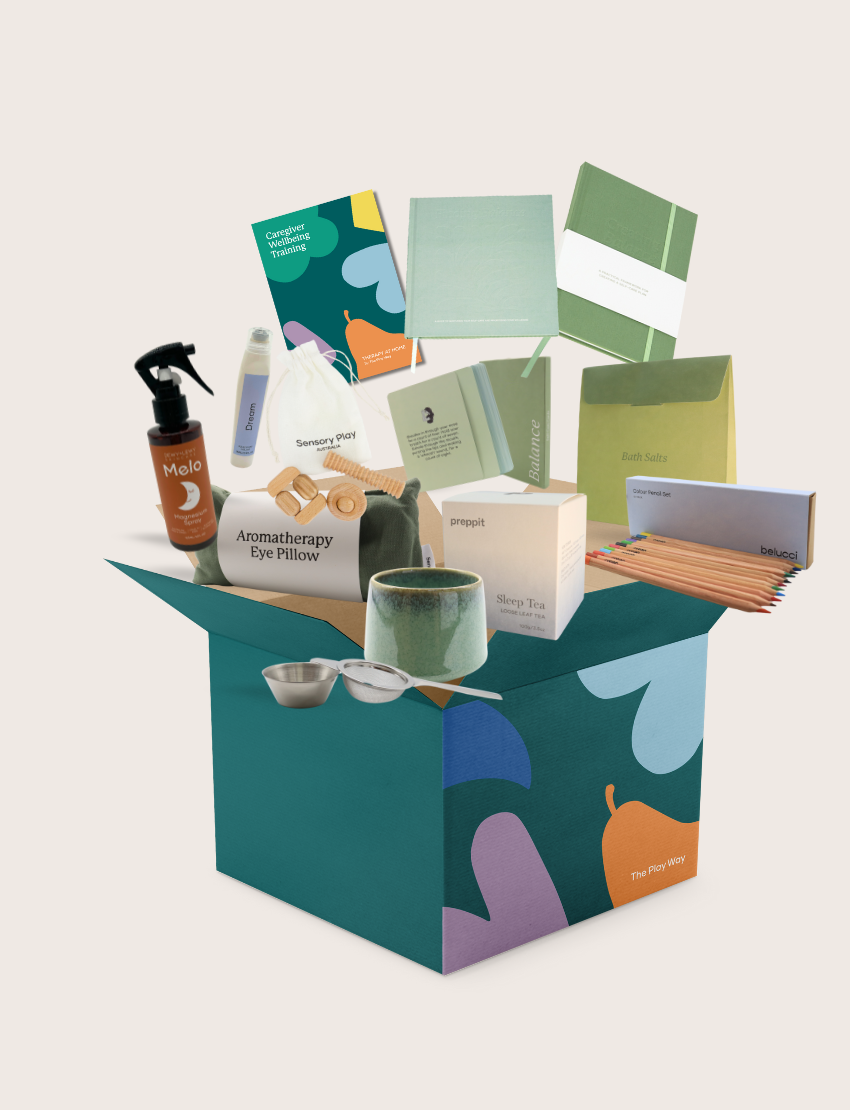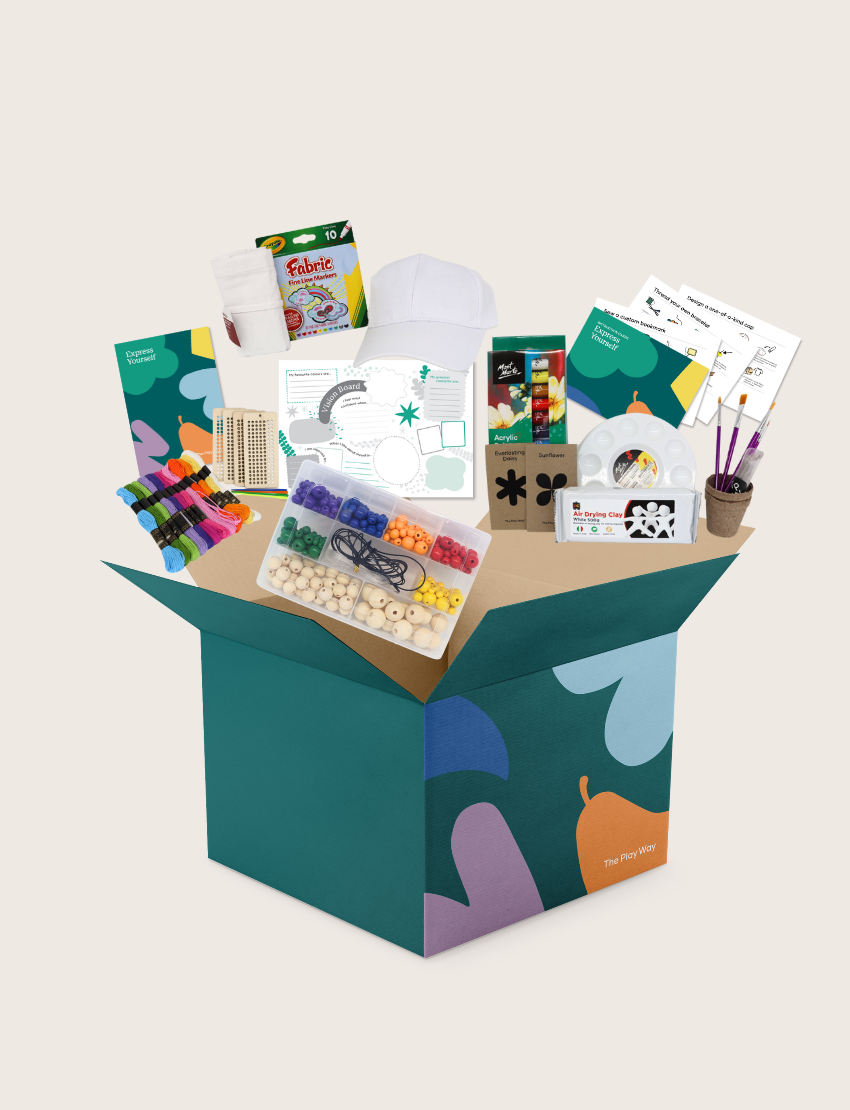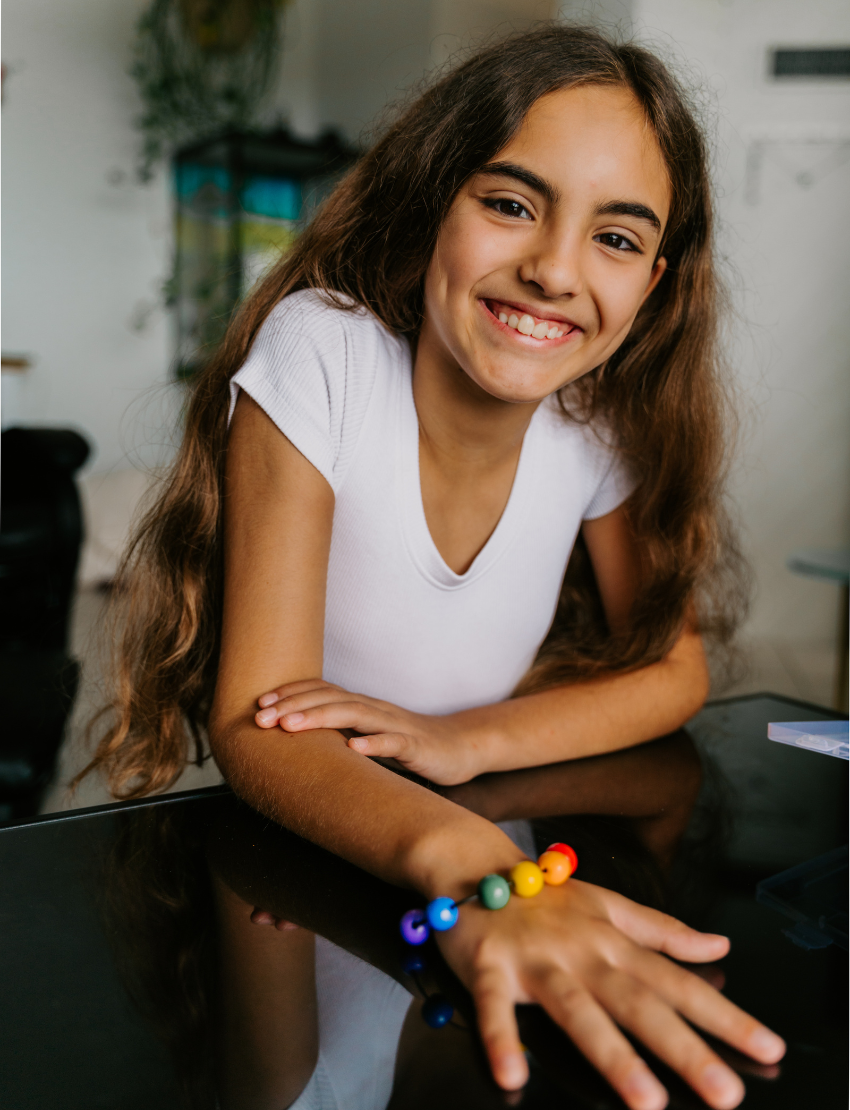Executive Summary
This report synthesises current research to demonstrate how specific, structured parenting tools, such as visual schedules, gross motor development aids, imaginative play materials, and therapeutic games, significantly boost parental confidence and alleviate stress. Evidence consistently supports that practical, tangible resources, implementable within the home environment, are effective in fostering parental self-efficacy and reducing stress, leading to more harmonious family environments. By equipping parents with these accessible, evidence-based tools, it is possible to empower them to navigate parenting challenges with greater assurance and emotional well-being, ultimately benefiting both parents and children.
Introduction: Empowering Parents for Thriving Families
Parenting, while profoundly rewarding, is undeniably one of life's most challenging roles, often accompanied by significant stress and self-doubt. Parents grapple with daily decisions that lack instruction manuals, from managing children's behaviours to navigating complex social dynamics and societal pressures. This inherent complexity can lead to feelings of overwhelm and exhaustion, impacting both the parent's well-being and the broader family dynamic.
This report posits that providing parents with simple, structured, and evidence-based tangible tools they can readily use within their home environment can profoundly increase their confidence, often referred to as parental self-efficacy, and significantly decrease their stress levels. This approach shifts the focus from broad, often inaccessible programs to practical, daily applications that foster immediate and lasting positive change. The emphasis is on actionable, physical resources that can be integrated into everyday family life, rather than extensive, formal interventions.
This analysis will explore key categories of home-based tools, including visual schedules, movement and gross motor development aids, imaginative play materials for language development, and therapeutic games. For each category, the report will present the supporting formal research, highlight its mechanisms of action, and offer practical guidance for implementation. The discussion will maintain a focus on tangible "tools" that parents can actively employ, illustrating how these specific products and practices contribute to a more confident and less stressed parenting journey.
The Foundation: Understanding Parental Self-Efficacy and Stress
Effective parenting is deeply intertwined with a parent's internal state, particularly their sense of capability and their experience of stress. Understanding these two critical components - parental self-efficacy and parental stress - is fundamental to appreciating how simple, structured tools can bring about meaningful change in family well-being.
Defining Parental Self-Efficacy (PSE)
Parental self-efficacy (PSE) refers to a parent's belief in their capacity to effectively manage child-rearing tasks and achieve desired parenting outcomes. It is not merely a fixed personality trait but rather a learnable set of beliefs that directly influences parenting quality and child adjustment. Higher levels of PSE are consistently linked to more positive parenting behaviours, such as warmth, sensitivity, and consistent rule-setting. Conversely, parents with low self-efficacy may resort to more coercive or harsh parenting approaches, highlighting the critical role this belief plays in effective child-rearing.
The Pervasive Impact of Parental Stress
Parental stress encompasses feelings of being overwhelmed, anxious, frustrated, and exhausted, often stemming from the demands of parenting responsibilities, financial pressures, a lack of social support, and child-related problems. High parental stress has a significant negative impact on children's emotional and behavioural well-being, often leading to less patience, increased irritability, the use of harsher discipline techniques, and impaired parental responsiveness. This stress is robustly linked to reduced parental well-being, including lower levels of happiness and life satisfaction. The interplay can create a challenging cycle where parental stress contributes to negative parenting, which in turn exacerbates child behavioural problems.
How Tools Enhance PSE and Mitigate Stress
Targeted interventions, frequently delivered within broader parent training programs, have consistently demonstrated effectiveness in improving PSE and reducing parental stress. The effectiveness of these interventions lies in their ability to teach specific, actionable strategies that parents can apply directly, thereby building their skills and competence. Research confirms that enhancing parenting skills and self-efficacy is a proven strategy to reduce child externalising behaviours and parental stress.
EXPLORE OUR PROGRAMS COLLECTION

The enhancement of parental self-efficacy creates a positive feedback loop that extends beyond the parent's immediate well-being to profoundly influence child behaviour and family dynamics. When parents feel more competent, they adopt more positive parenting behaviours, which in turn leads to improved child behaviour. This improvement further reinforces the parent's confidence and reduces overall household tension. This forms a clear sequence: increased parental self-efficacy leads to more positive parenting (characterised by warmth, consistency, and positive reinforcement), which results in improved child behaviour, a reduction in household tension, and a subsequent increase in parental confidence and decrease in stress. This creates a self-sustaining positive cycle within the family unit.
A crucial aspect of this process is that parental self-efficacy does not merely correlate with lower stress; it actively serves as a protective factor between external demands and parental stress. This means that feeling competent in parenting acts as a buffer, making parents less susceptible to stress, even when facing external demands or a lack of social support. When parents feel capable, they interpret challenges differently, exhibit greater resilience, and are less easily overwhelmed, even if external support is inconsistent. This highlights that interventions should actively cultivate parental self-efficacy, not just provide information or external support, as PSE provides internal, stable coping resources.
The effectiveness of parent training, particularly in reducing stress and increasing confidence, lies not just in providing information, but in offering actionable tools and opportunities for practice and feedback. This active engagement transforms abstract knowledge into tangible skills, directly boosting self-efficacy. The evidence indicates that providing parents with opportunities to practice specific strategies, coupled with progress tracking and feedback, is an efficacious model that also leads to high parental satisfaction. This underscores that the mechanisms driving confidence and stress reduction are the active, structured tools parents learn and apply.
The table below summarises these key concepts and their interconnected impacts:
Table: Key Concepts in Parental Well-being
|
Concept |
Definition |
Impact on Parent |
Impact on Child/Family |
|
Parental Self-Efficacy (PSE) |
Belief in one's capacity to parent effectively. |
Increased confidence, reduced stress, more positive parenting. |
Improved child behaviour, healthier parent-child relationship, reduced household tension. |
|
Parental Stress |
Emotional, psychological, and physical strain from parenting demands. |
Reduced well-being, anxiety, frustration, exhaustion, negative coping. |
Harsher discipline, impaired responsiveness, increased child anxiety/behavioural problems, negative family environment. |
Visual Schedules: Guiding Predictability and Independence
Visual schedules are powerful, tangible tools that provide clear, predictable structures for daily activities, significantly enhancing children's independence and emotional regulation, which in turn boosts parental confidence and reduces stress.
Visual Schedules as Home Tools
Visual schedules are customised visual tools that use images, symbols, or words to organise and represent daily activities in a clear, predictable manner. They illustrate a sequence of tasks, helping individuals, especially children and those with special needs, anticipate what comes next and navigate their routines more independently and confidently. These tools can be physical, such as laminated picture cards, magnetic boards, or dry-erase surfaces, or digital through apps and software. They are versatile and applicable for various activities like morning preparations, meal times, bedtime routines, or daily outings, and are particularly valuable during transitions.

Evidence Supporting their Effectiveness
The efficacy of visual schedules is well-supported by research demonstrating benefits for both children and parents:
Increased Parental Confidence and Reduced Stress:
-
As children gain independence and follow routines more easily with visual schedules, parents experience a heightened sense of control and reduced stress.
-
The reduction in anxiety and behavioural issues in children, especially during transitions, directly alleviates parental burden and feelings of overwhelm.
-
Parents and educators have reported increased satisfaction with the use of visual schedules, indicating their success in fostering structured environments and improving family functioning.
-
By providing a clear roadmap for tasks, visual schedules help parents feel more competent in guiding their child's development and managing daily challenges.
Improved Child Independence, Emotional Regulation, and Behaviour:
-
Visual schedules significantly boost independence by providing a clear and predictable order of activities, making it easier for children to understand what is expected of them.
-
They support better understanding and recall of routines, helping children anticipate upcoming tasks and reduce uncertainty and anxiety.
-
This clarity also lessens behavioural issues, particularly during transitions or unfamiliar situations, by helping children mentally prepare for changes.
-
Visual schedules are tailored to accommodate receptive language difficulties by illustrating activities through pictures, icons, or symbols, enhancing communication and organisational skills.
-
They lead to considerable reductions in problem behaviours, especially during transitions.
-
By breaking down complex tasks into smaller, manageable steps, visual schedules help children approach new skills with clarity and confidence.
The use of visual schedules empowers parents by providing concrete, actionable strategies that yield visible positive outcomes in their children. This direct experience of success, or "enactive mastery," is a powerful driver of increased parental self-efficacy and reduced stress. When parents see their child follow a schedule independently or manage a transition smoothly, it validates their parenting skills and reinforces their belief in their ability to support their child's development.
Practical Tips for Consistent Implementation at Home
Integrating visual schedules into daily life can be simple and effective:
-
Use Visual Elements: Incorporate pictures or symbols to represent daily activities, making the schedule visually engaging and easier for the child to understand.
-
Eye Level Placement: Ensure the visual schedule is displayed at the child's eye level, making it accessible and inviting for them to check regularly.
-
Introduce Gradually: Start the visual schedule during calm moments, explaining its purpose to the child in a reassuring way.
-
Transition Warnings: Give transition warnings and countdowns before activity changes to reduce anxiety and prepare the child for what comes next.
-
Collaborative Creation: Where age-appropriate, ask the child to choose pictures or symbols for their schedule, fostering a sense of investment and excitement about following it.
-
Review and Adjust Regularly: Visual schedules are dynamic and should evolve with the child's growth and changing needs. Flexibility is vital.
-
Provide Positive Reinforcement: Encourage task completion by allowing the child to indicate when they have finished an activity, and offer praise, stickers, or favorite activities to motivate them.
Table: Visual Schedule Techniques and Their Impact on Parental Well-being
|
Technique |
Description |
Impact on Parental Confidence |
Impact on Parental Stress |
|
Visual Cues (Pictures/Symbols) |
Using images to represent tasks and routines. |
Increases belief in ability to communicate effectively and guide child. |
Reduces misunderstandings and behavioural issues, leading to calmer routines. |
|
Clear Sequencing |
Arranging tasks in a logical, predictable order. |
Enhances sense of control over daily flow, validates organisational skills. |
Minimises chaos and unpredictability, reduces anxiety during transitions. |
|
Interactive Elements (Checkboxes) |
Allowing children to mark off completed tasks. |
Reinforces parental effectiveness in fostering independence and responsibility. |
Streamlines routine management, reduces need for constant reminders. |
|
Transition Warnings |
Preparing children for upcoming changes in activities. |
Boosts confidence in managing transitions smoothly. |
Prevents meltdowns and emotional distress, creating a more peaceful environment. |
Movement and Gross Motor Tools: Building Physical and Emotional Resilience
Tangible tools and activities that promote gross motor development are crucial for children's physical and emotional well-being, and their consistent use can significantly reduce parental stress and increase confidence.
Movement and Gross Motor Tools as Home Tools
Gross motor skills involve the use of large muscle groups in the arms, legs, and core for activities such as sitting, crawling, jumping, running, and throwing. Tangible tools for fostering these skills at home can include simple equipment like balls, cones, jump ropes, or even designated spaces for active play. Structured exercise games are repeatable physical activities that can be integrated into daily routines, such as a game of catch, short YouTube workouts, bike rides, or playing tag. These tools provide a framework for children to engage in physical activity, which is essential for their overall development and emotional regulation.

Evidence Supporting their Effectiveness
The efficacy of movement and gross motor tools is supported by research demonstrating benefits for both children and parents:
Reduced Parental Stress and Enhanced Confidence:
-
When children engage in physical activity and improve their gross motor skills, it can reduce the physical and psychological load on parents, especially for children with limited self-mobility.
-
Play, including physical activity, helps reduce stress for both children and parents by releasing endorphins and promoting a feeling of well-being. Even short periods of shared play can serve as a powerful reminder for adults of their ability to support their child, allowing them to momentarily forget other stressors.
-
Parents gain confidence from seeing their child's physical development and improved emotional regulation through movement. The ability to provide effective tools for their child's physical and mental health boosts parental self-efficacy.
-
Structured exercise can be a low-cost, practical addition to other forms of care, making it an accessible tool for parents to implement.
Improved Child Emotional Regulation, Behaviour, and Development:
-
Regular, structured exercise can reduce symptoms of depression and anxiety in children, with improvements seen even in brief programs.
-
Movement helps children release stress, feel more confident, and connect with their bodies.
-
Gross motor development enhances coordination and strength.
-
Children who play regularly with their parents are less likely to develop anxiety, depression, aggression, and sleep problems.
-
Physical activity is positively correlated with the development of motor skills.
-
A predictable environment, often facilitated by consistent use of calming sensory and movement tools, helps highly sensitive children manage their emotions better.
The use of movement and gross motor tools empowers parents by providing concrete, actionable strategies that yield visible positive outcomes in their children's physical and emotional health. This direct experience of success, or "enactive mastery," is a powerful driver of increased parental self-efficacy and reduced stress. When parents see their child engaging happily in physical play or demonstrating improved coordination, it validates their parenting skills and reinforces their belief in their ability to support their child's development.
Practical Tips for Integrating Movement and Gross Motor Tools at Home
Integrating movement and gross motor activities into daily family life can be simple and effective:
-
Encourage Simple and Repeatable Activities: Focus on activities like daily walks after school, bike rides, jump rope, swimming, or playing tag.
-
Incorporate into Routines: Schedule regular times for physical activity, even short bursts, as consistency is key.
-
Utilise Household Items: Balls, cushions for jumping, or creating obstacle courses with furniture can turn everyday items into gross motor tools.
-
Model Active Behaviour: Parents participating in physical activities with their children not only provide a positive role model but also strengthen the parent-child bond.
-
Make it Fun: The most important aspect is that children move often in ways that feel fun or rewarding.
Table: Movement and Gross Motor Tools and Their Impact on Parental Well-being
|
Tool Category |
Description |
Impact on Parental Confidence |
Impact on Parental Stress |
|
Balls & Cones |
Equipment for games like catch, obstacle courses. |
Empowers parents with clear tools to facilitate physical play. |
Reduces child hyperactivity/restlessness, leading to calmer interactions. |
|
Structured Exercise Games |
Simple, repeatable physical activities (e.g., short workouts, tag). |
Boosts confidence in promoting child's physical and mental health. |
Releases stress for both parent and child, improves mood and energy. |
|
Outdoor Play Equipment |
Swings, slides, open green spaces. |
Validates parental efforts in providing enriching developmental opportunities. |
Fosters child's self-regulation and reduces behavioural issues, easing parental burden. |
|
Movement-Based Routines |
Incorporating physical activity into daily schedules. |
Increases sense of control over child's energy levels and behaviour. |
Creates predictable outlets for energy, reducing unexpected challenges. |
EXPLORE OUR MOVEMENT/GROSS MOTOR RANGE
Imaginative Play and Language Development: Fostering Expression and Connection
Imaginative play, particularly with tangible toys and tools, is a powerful catalyst for language development and emotional expression in children, which in turn significantly enhances parental confidence and reduces stress.
Imaginative Play Tools for Language Development
Imaginative play involves children using their creativity to explore and master a world they create, often through symbolic play and acting out scenarios. This type of play thrives with "true toys" such as blocks, dolls, action figures, and dress-up clothes, which require children to use their full imagination rather than being passive recipients of entertainment. These tangible tools provide open-ended opportunities for children to develop narratives, express feelings, and practice social roles, all of which are intrinsically linked to language acquisition and communication skills.

Evidence Supporting their Effectiveness
The efficacy of imaginative play tools for language development is well-documented:
Increased Parental Confidence and Reduced Stress:
-
When parents engage in imaginative play with their children, it strengthens the parent-child bond and provides opportunities for learning and connection.
-
Seeing their child develop language skills, express complex emotions, and process experiences through play increases parental confidence in their ability to support their child's growth.
-
Play helps reduce stress for both children and parents by releasing endorphins and promoting a feeling of well-being.
-
As children become more articulate and better able to express their needs and feelings, parental frustration and stress related to communication challenges are naturally reduced.
Improved Child Language, Emotional Regulation, and Development:
-
Imaginative play contributes significantly to the development of cognitive, motor, psychosocial, emotional, and linguistic skills.
-
Children's language skills develop naturally through imaginative play as they learn to describe what they're doing, how it feels, and articulate their thoughts, eventually using more descriptive words.
-
Less verbal children may be able to express their views, experiences, and even frustrations through play, allowing their parents an opportunity to gain a fuller understanding of their perspective.
-
Play helps children process difficult emotions by recreating painful events or challenging situations through imaginative play (e.g., recreating a conflict with dolls). This provides a safe outlet for emotional expression.
-
It fosters creativity, imagination, and problem-solving skills as children manipulate materials and develop narratives.
-
As children master their self-created worlds through play, they develop new competencies that lead to enhanced confidence and resilience.
The use of imaginative play tools empowers parents by providing a natural and engaging avenue for fostering their child's communication and emotional intelligence. This direct observation of their child's expressive growth validates parental efforts and reinforces their belief in their ability to nurture well-rounded individuals, leading to increased confidence and reduced stress.
Practical Tips for Integrating Imaginative Play at Home
Integrating imaginative play with tangible tools into daily family life can be simple and effective:
-
Prioritise "True Toys": Emphasise open-ended toys like blocks, dolls, puppets, and art supplies that encourage children to use their imagination fully, rather than passive toys.
-
Create Opportunities for Unstructured Play: Provide ample, unscheduled, independent, non-screen time for children to be creative, reflect, and decompress.
-
Be Present and Engaged: Give your full attention during playtime. Your active involvement signals to your child that they are valued and that the activity is important, strengthening your bond and boosting their confidence.
-
Follow the Child's Lead: While parents can monitor for safety, a large proportion of play should be child-driven rather than adult-directed, allowing children to practice decision-making and explore their interests.
-
Encourage Role-Playing: Provide props or scenarios for acting out practical life skills or social situations, enhancing social understanding and emotional expression.
Table: Imaginative Play Tools and Their Impact on Parental Well-being
|
Tool Category |
Description |
Impact on Parental Confidence |
Impact on Parental Stress |
|
Open-Ended Toys (Blocks, Dolls) |
Materials that allow for diverse, imaginative construction and role-playing. |
Empowers parents to facilitate child-led learning and expression. |
Reduces communication frustration, fosters positive interactions. |
|
Dress-Up Clothes/Props |
Items for role-playing various characters and scenarios. |
Increases confidence in supporting child's social and emotional development. |
Provides a safe outlet for emotional processing, reducing behavioural issues. |
|
Storytelling Aids (Puppets, Picture Cards) |
Tools to help children create and narrate stories. |
Boosts belief in ability to foster language and narrative skills. |
Enhances communication, reduces misunderstandings, calms through expression. |
|
Art Supplies (Playdough, Paint) |
Materials for creative expression and sensory exploration. |
Validates parental role in nurturing creativity and fine motor skills. |
Offers a calming, self-regulated activity for children, reducing parental burden. |
EXPLORE OUR IMAGINATIVE PLAY RANGE
Sensory Play and Therapeutic Materials: Fostering Calm and Connection
Sensory play and the use of specific therapeutic materials offer tangible, home-based tools that significantly contribute to both children's emotional regulation and parents' confidence and stress reduction. These tools engage the senses, providing a structured yet flexible environment for exploration and emotional processing.
Sensory and Therapeutic Materials as Home Tools
Sensory play involves activities that stimulate a child's senses, such as touch, sight, sound, smell, and taste. These activities often utilise specific materials designed to engage these senses, providing a rich environment for learning and emotional regulation. Examples of simple, structured sensory tools readily available for home use include:
-
Sensory Bins: These are containers filled with various materials like sand, shredded paper, water, or dried rice, often accompanied by small tools like shovels or figurines. They offer diverse textures and opportunities for manipulation, encouraging exploration and problem-solving.
-
Weighted Items: Tools such as weighted lap pads or sensory seats can provide calming pressure, helping to regulate a child's arousal level and signal a time for stillness.
-
Familiar Comfort Items: Simple items like favorite teddies, familiar songs, or even a preferred drink can be used by caregivers to soothe young children and help them feel calmed.
-
Integrated Sensory Stimulation Kits: These can involve a combination of visual, auditory, tactile, gustatory, and olfactory stimuli provided by parents within everyday activities, such as during feeding or play.
These materials provide concrete methods for children to process emotions and develop skills, which in turn reduces parental burden and increases their sense of efficacy.

Evidence Supporting their Effectiveness
The efficacy of sensory play and therapeutic materials is supported by research demonstrating benefits for both children and parents:
Reduced Parental Stress and Enhanced Confidence:
-
Play, including sensory play, helps reduce stress for both children and parents by releasing endorphins and promoting a feeling of well-being. Even short periods of shared play can serve as a powerful reminder for adults of their ability to support their child, allowing them to momentarily forget other stressors.
-
Home-based integrated sensory stimulation programs, when provided by parents to preterm infants, have been shown to significantly improve parents' mental health, leading to reductions in maternal depression, state anxiety, and trait anxiety, as well as paternal trait and state anxiety. This program, which involved parents providing sensory input within daily routines, was effective in improving parents' mental health for up to six months.
-
Close physical contact, such as in Kangaroo Mother Care (skin-to-skin contact), stimulates the release of oxytocin, fostering feelings of trust, security, and attachment in both parent and baby. This can lead to reduced anxiety levels and increased feelings of competence and emotional closeness for parents.
-
As children benefit from sensory play, becoming calmer and more regulated, parents experience a reduction in stress and an increase in their confidence in managing their child's needs. Sensory activities have been shown to reduce stress hormones and provide a safe outlet for emotional expression, contributing to a sense of relaxation for children, which in turn benefits parents.
Improved Child Emotional Regulation and Development:
-
Sensory play has a calming effect, helping children regulate their overall arousal level. It can stimulate a sluggish child or help a hyperactive child focus. For children with sensory sensitivities, sensory activities offer a structured, predictable environment that aids in regulating sensory input, reducing sensory overload and anxiety.
-
Children who play regularly with their parents are less likely to develop anxiety, depression, aggression, and sleep problems. Play helps strengthen the parent-child bond and allows children to process difficult emotions by recreating painful events through imaginative play.
-
Sensory play naturally develops language skills (describing textures, emotions), fine motor skills (building, pouring, mixing, stacking, threading), gross motor skills (sitting, crawling, jumping), and cognitive growth (problem-solving, critical thinking, focus, concentration).
-
A predictable environment, often facilitated by consistent use of calming sensory tools, helps highly sensitive children manage their emotions better.
The use of sensory and therapeutic materials empowers parents by providing concrete, actionable strategies that yield visible positive outcomes in their children. This direct experience of success, or "enactive mastery," is a powerful driver of increased parental self-efficacy and reduced stress. When parents see their child calm down or engage positively with a sensory activity, it validates their parenting skills and reinforces their belief in their ability to support their child's development.
Practical Tips for Integrating Sensory Materials at Home
Integrating sensory and therapeutic materials into daily life can be simple and effective:
-
Create a Dedicated Sensory Space: A designated area for sensory activities or calming tools can provide a predictable environment for children to self-regulate.
-
Observe and Adapt: Pay attention to which textures, sounds, or movements your child responds to positively. Allow children to freely explore sensory contents without strict direction.
-
Incorporate into Routines: Use calming sensory activities as part of bedtime routines or as a transition tool between activities to help children regulate their emotions.
-
Prioritise Safety: When using sensory materials, ensure they are age-appropriate and not choking hazards, and always supervise young children.
-
Model Engagement: Participate in sensory play with your child. Your full attention and shared enjoyment reinforce their value and strengthen your bond, indirectly boosting your confidence.
Table: Sensory and Therapeutic Materials and Their Impact on Parental Well-being
|
Tool Category |
Description |
Impact on Parental Confidence |
Impact on Parental Stress |
|
Sensory Materials (e.g., rice, sand, playdough) |
Various materials for tactile exploration and manipulation. |
Increases sense of competence as child engages positively and calms. |
Reduces chaos, provides child self-regulation, lessens behavioural challenges. |
|
Weighted Items |
Lap pads, sensory seats providing calming pressure. |
Empowers parents with a clear tool for emotional regulation. |
Helps soothe child, reducing agitation and parental overwhelm. |
|
Familiar Comfort Items |
Favorite teddies, songs, preferred drinks used for soothing. |
Reinforces parental ability to comfort and connect. |
Provides simple, effective calming strategies, reducing immediate stress. |
|
Integrated Sensory Stimulation |
Parent-provided visual, auditory, tactile, gustatory, olfactory input in daily activities. |
Boosts feelings of competence and emotional closeness with child. |
Significantly reduces maternal depression, state/trait anxiety, and paternal anxiety. |
Therapeutic Games and Structured Play: Building Skills and Confidence
Therapeutic games and structured play activities offer another powerful category of tangible tools that enhance children's development while simultaneously increasing parental confidence and reducing stress. These tools provide a framework for skill-building, emotional expression, and positive interaction.
Therapeutic Games and Structured Play as Home Tools
Therapeutic games and structured play are intentional, goal-oriented activities designed to guide children toward specific developmental outcomes, often incorporating rules and objectives. Unlike free play, these tools provide a framework for learning and interaction. Examples of such tools that can be used at home include:
-
Board Games and Puzzles: Games like Monopoly or Scrabble, and various puzzles, enhance strategic thinking, problem-solving abilities, and social interaction by requiring children to follow directions and achieve set goals.
-
Role-Playing Scenarios/Kits: These involve acting out practical life skills or social situations, enhancing social understanding and emotional expression. While not explicitly "kits" in the research, the concept of structured role-playing implies a set of scenarios or props.
-
Card Sets/Handouts (adapted for play): Concepts like "Worry Box Handout" or "Thought Detective (PDF)" can be adapted into physical card sets or activity cards that guide emotional regulation or problem-solving through play.
These tools provide a structured way for parents to engage with their children, fostering skill development and emotional well-being in a playful context.

Research Demonstrating Efficacy
The evidence consistently highlights the benefits of therapeutic games and structured play for both children and parents:
Increased Parental Confidence and Reduced Stress:
-
Play, in general, expands self-expression, self-knowledge, self-actualisation, and self-efficacy, and relieves feelings of stress and boredom for adults.
-
When parents play with their children, it helps reduce stress levels for both. Even short periods of play can serve as a powerful reminder for adults of their ability to support their child, providing an opportunity to forget other commitments.
-
Play helps build confidence in children by giving them a sense of accomplishment and competence. When parents give their full attention during playtime, children feel valued and loved, which can indirectly boost parental confidence in their role.
-
For therapists, higher self-efficacy (confidence in engaging caregivers) leads to fewer perceived barriers to parent involvement and less overwhelm from stress. This suggests that tools that make it easier for parents to engage in therapeutic play can boost their confidence.
-
Parent-Child Interaction Therapy (PCIT), which teaches parents play-therapy skills and behaviour management, aims to increase parental calmness and confidence during discipline and reduce parental frustration. Parents are coached to use positive attention strategies and track progress, providing immediate feedback that builds confidence.
Improved Child Mental Health and Behavioural Outcomes:
-
Children who play regularly with their parents are less likely to develop anxiety, depression, aggression, and sleep problems.
-
Play therapy, a systematic use of play for therapeutic benefits, helps children learn adaptive behaviours, communicate feelings, modify behaviour, develop problem-solving skills, and learn ways of relating to others. Meta-analytic reviews show moderate to high positive effects of play therapy across various issues, with greater effects when parents are actively involved.
-
Structured play (e.g., board games, puzzles, organised sports) enhances physical skills (coordination, strength), cognitive abilities (problem-solving, critical thinking, attention), and social-emotional development (teamwork, cooperation, communication, empathy, emotional regulation).
The structured nature of these games and play activities provides parents with clear guidelines and objectives, reducing the ambiguity often associated with unstructured play. This clarity, combined with observable positive outcomes in their children, directly reinforces parental self-efficacy and reduces the stress of feeling unsure how to engage or support their child effectively.
Practical Guidance for Using Therapeutic Games and Structured Play at Home
To maximise the benefits of therapeutic games and structured play, consider these practical approaches:
-
Choose Age-Appropriate Tools: Select games and activities that align with your child's developmental stage and interests to ensure engagement and effectiveness.
-
Set Clear Expectations: For structured play, explain the rules and objectives clearly. For therapeutic games, discuss the purpose in an age-appropriate way (e.g., "This game helps us practice calming our bodies").
-
Focus on Process, Not Just Outcome: Emphasise effort, participation, and learning over winning or perfect execution. This fosters a growth mindset and reduces pressure for both parent and child.
-
Integrate into Routines: Schedule regular "game time" or "play sessions" to create predictability and consistency, which children thrive on.
-
Be Present and Engaged: Give your full attention during playtime. Your active involvement signals to your child that they are valued and that the activity is important – strengthening your bond and boosting their confidence.
-
Adapt and Be Flexible: While structured, these tools can be adapted. Modify rules or provide visual aids to make participation easier and more engaging if needed.
Table: Therapeutic Games and Structured Play Tools and Their Impact on Parental Well-being
|
Tool Category |
Description |
Impact on Parental Confidence |
Impact on Parental Stress |
|
Board Games & Puzzles |
Games with rules and objectives, requiring strategic thinking and problem-solving. |
Provides clear framework for interaction, boosts sense of competence in guiding child. |
Reduces behavioural issues through engagement, creates predictable, positive interactions. |
|
Role-Playing Scenarios |
Acting out social situations or life skills, often with props. |
Enhances belief in ability to teach social and emotional skills effectively. |
Reduces anxiety about child's social development, provides structured practice for challenges. |
|
Activity Card Sets |
Physical cards guiding emotional regulation or problem-solving through play. |
Empowers parents with clear, actionable steps for addressing specific behaviours. |
Offers structured approach to challenges, reducing feelings of overwhelm. |
|
Structured Exercise Games |
Physical activities presented as games (e.g., catch, dance routines). |
Increases confidence in promoting child's physical and mental health. |
Releases stress for both parent and child, improves mood and energy levels. |
EXPLORE OUR CARD SETS AND GAMES
Synergy and Sustainability: Integrating Tools for Lasting Impact
The true transformative power for parents seeking to increase confidence and reduce stress emerges not from the isolated application of individual tools, but from their synergistic integration into a holistic approach to family life.
Complementary Nature of Tools
The various categories of tangible tools discussed—visual schedules, movement tools, imaginative play materials, and therapeutic games—are highly complementary. For instance, a child who uses a visual schedule to understand their daily routine may then be better prepared to engage in structured physical play, enhancing their gross motor skills. Similarly, the emotional regulation fostered by imaginative play can create a more receptive environment for engaging in therapeutic games that teach problem-solving. The predictability offered by consistent use of these tools within daily routines further reinforces their effectiveness, making the application of other tools more impactful. Research often discusses these elements within broader "parent training" or "positive parenting" frameworks, suggesting their combined efficacy.
Importance of Consistency and Adaptation
The long-term benefits of these tools are heavily reliant on consistent application. Sporadic use can diminish effectiveness and lead to confusion for children. However, this consistency must be balanced with flexibility and adaptation as children grow, their developmental needs evolve, and family circumstances change. What works for a toddler's gross motor needs may need adjustment for a school-aged child's imaginative play preferences. Routines, for example, should be viewed as adaptable guides rather than rigid rules, allowing families to meet changing needs while maintaining underlying structure.
Self-Compassion in the Parenting Journey
Acknowledging that parenting is inherently challenging and embracing imperfection is a vital component of a mindful and sustainable approach. Parents need to recognise their own triggers and patterns, practice self-care, and understand that they cannot effectively support their children if their own emotional reserves are depleted. Self-compassion, forgiveness for oneself and others, and a willingness to learn from perceived failures are all integral to maintaining parental well-being and modeling healthy emotional responses for children.
The true power of these tangible tools lies in their ability to transform the entire family into a more resilient, emotionally intelligent, and harmonious ecosystem, rather than just solving individual problems. Their combined use creates a positive feedback loop that benefits every member. Positive parenting, which encompasses the use of such tools, aims to build a child's self-esteem and supports a mutually respectful parent-child relationship without breaking the child's spirit. When parents actively use visual schedules, engage in movement activities, encourage imaginative play, and utilise therapeutic games, the cumulative effect is a reduction in overall family friction, an increase in emotional understanding, and a shared sense of security, leading to a more functional and content family unit.
The shift from solely relying on external-only facilitated interventions, to internalising and applying simple home-based tools fosters a profound sense of intrinsic empowerment in parents. This internalised skill set provides a sustainable source of confidence and stress management, independent of external support structures. Parental self-efficacy, as a personal resource, has been shown to be more stable and protective against stress than reliance on external social support. When parents learn and actively apply these tools themselves, they gain a sense of "enactive mastery," realising they possess the agency to effect positive change within their family. This internal locus of control is a key psychological benefit that leads to sustained confidence and reduced stress, as parents become less dependent on external interventions for solutions.
Conclusion: A More Confident and Less Stressed Parenting Journey
The evidence overwhelmingly supports the assertion that when parents are equipped with simple, structured, tangible tools, their confidence in their parenting abilities increases significantly, and their stress levels decrease. This report has highlighted key categories of such tools: visual schedules, movement and gross motor development aids, imaginative play materials, and therapeutic games.
These tools offer more than just immediate relief from daily stressors; they foster a positive cycle of improved child behaviour, strengthened family relationships, and enhanced overall family well-being. By providing parents with concrete, physical resources they can implement at home, these tools build internal resilience and self-efficacy, empowering parents to navigate the complexities of family life with greater ease and joy. The ability to apply these practices consistently, coupled with a compassionate understanding of the parenting journey, leads to a profound and lasting positive impact. Embracing these evidence-based strategies is a powerful step towards a more confident, less stressed, and ultimately more fulfilling parenting experience for both parents and children.
Works cited
-
Parents Under Pressure - HHS.gov, accessed August 6, 2025, https://www.hhs.gov/sites/default/files/parents-under-pressure.pdf
-
(PDF) Parental Stress and Well-Being: A Meta-analysis - ResearchGate, accessed August 6, 2025, https://www.researchgate.net/publication/389682869_Parental_Stress_and_Well-Being_A_Meta-analysis
-
Confident Parents for Easier Children: A Parental Self-Efficacy Program to Improve Young Children's Behavior - MDPI, accessed August 6, 2025, https://www.mdpi.com/2227-7102/8/3/134
-
Parental Self-efficacy in Promoting Children Care and Parenting Qualityvv - ResearchGate, accessed August 6, 2025, https://www.researchgate.net/publication/322999500_Parental_Self-efficacy_in_Promoting_Children_Care_and_Parenting_Qualityvv
-
(PDF) Factors associated with parenting self‐efficacy: A systematic review - ResearchGate, accessed August 6, 2025, https://www.researchgate.net/publication/349340645_Factors_associated_with_parenting_self-efficacy_A_systematic_review
-
Parental Stress and Well-Being: A Meta-analysis - PMC - PubMed Central, accessed August 6, 2025, https://pmc.ncbi.nlm.nih.gov/articles/PMC12162691/
-
How Parent Training Helps Reduce Stress in the Household - Adina ABA, accessed August 6, 2025, https://www.adinaaba.com/post/how-parent-training-helps-reduce-stress-in-the-household
-
Effect of behavioral intervention training on parents' stress, parenting ..., accessed August 6, 2025, https://scholarship.richmond.edu/cgi/viewcontent.cgi?referer=&httpsredir=1&article=1013&context=honors-theses
-
(PDF) Improved Parental Self-Efficacy Reduces Stress in Women ..., accessed August 6, 2025, https://www.researchgate.net/publication/322222927_Improved_Parental_Self-Efficacy_Reduces_Stress_in_Women_Receiving_Home_Visitation_in_a_Longitudinal_Study
-
Brief Parenting Interventions for Children at Risk of Externalizing ..., accessed August 6, 2025, https://www.researchgate.net/publication/283943432_Brief_Parenting_Interventions_for_Children_at_Risk_of_Externalizing_Behavior_Problems_A_Systematic_Review
-
Behaviorally Focused Parental Training: For Reducing Stress - RethinkCare, accessed August 6, 2025, https://www.rethinkcare.com/resources/behaviorally-focused-parental-training-key-driver-reducing-stress-increasing-confidence-parents/
-
The Effect of Behavioral Training Program on Stress among Parents of Children with Attention Deficit Hyperactivity Disorder, accessed August 6, 2025, https://hijnrp.journals.ekb.eg/article_280792_9c3dbbc8d68dc3736e394d5966c1e50d.pdf
-
Effects of behavioural parent training for children with attention-deficit/hyperactivity disorder on parenting behaviour: a protocol for an individual participant data meta-analysis, accessed August 6, 2025, https://pmc.ncbi.nlm.nih.gov/articles/PMC7703408/
-
The association between parenting stress, parenting self-efficacy ..., accessed August 6, 2025, https://pubmed.ncbi.nlm.nih.gov/24668566/
-
The impact of visual schedules on daily routines - Mastermind Behavior Services, accessed August 7, 2025, https://www.mastermindbehavior.com/post/the-impact-of-visual-schedules-on-daily-routines
-
The Role of Visual Schedules in Home-Based ABA Therapy Success, accessed August 7, 2025, https://www.soaringhighaba.com/post/the-role-of-visual-schedules-in-home-based-aba-therapy-success
-
Relationship among Gross Motor Function, Parenting Stress, Sense of Control, and Depression in Mothers of Children with Cerebral Palsy - PMC, accessed August 7, 2025, https://pmc.ncbi.nlm.nih.gov/articles/PMC8430729/
-
Screen time: impacts on education and wellbeing - Parliament UK, accessed August 7, 2025, https://publications.parliament.uk/pa/cm5804/cmselect/cmeduc/118/report.html
-
Children's only profession: Playing with toys - PMC, accessed August 7, 2025, https://pmc.ncbi.nlm.nih.gov/articles/PMC8430366/
-
The Importance of Play in Promoting Healthy Child Development and Maintaining Strong Parent-Child Bonds - AAP Publications, accessed August 7, 2025, https://publications.aap.org/pediatrics/article/119/1/182/70699/The-Importance-of-Play-in-Promoting-Healthy-Child
-
Research on the Role of Parents and the Home Environment on Emotional Regulation in Children - Mental Health Center Kids, accessed August 6, 2025, https://mentalhealthcenterkids.com/blogs/articles/research-on-the-role-of-parents-and-the-home-environment-on-emotional-regulation-in-children
-
Positive Reinforcement for Kids: 11+ Examples for Parents, accessed August 6, 2025, https://positivepsychology.com/parenting-positive-reinforcement/
-
The Importance of Positive Reinforcement in Parenting - Kids First Services, accessed August 6, 2025, https://www.kidsfirstservices.com/first-insights/the-importance-of-positive-reinforcement-in-parenting
-
Kids Thrive on Structure and Routines - Health and Safety - Seattle Children's Hospital, accessed August 6, 2025, https://www.seattlechildrens.org/health-safety/parenting/kids-thrive-routines/
-
12 Best Positive Parenting Books & Workbooks for Parents - Positive Psychology, accessed August 6, 2025, https://positivepsychology.com/positive-parenting-books-training/
-
What is Positive Parenting? 33 Examples and Benefits, accessed August 6, 2025, https://positivepsychology.com/positive-parenting/
-
(PDF) Journal of Innovation in The Impact of Positive Reinforcement on Behavioral Regulation in Young Children - ResearchGate, accessed August 6, 2025, https://www.researchgate.net/publication/393132493_Journal_of_Innovation_in_The_Impact_of_Positive_Reinforcement_on_Behavioral_Regulation_in_Young_Children


